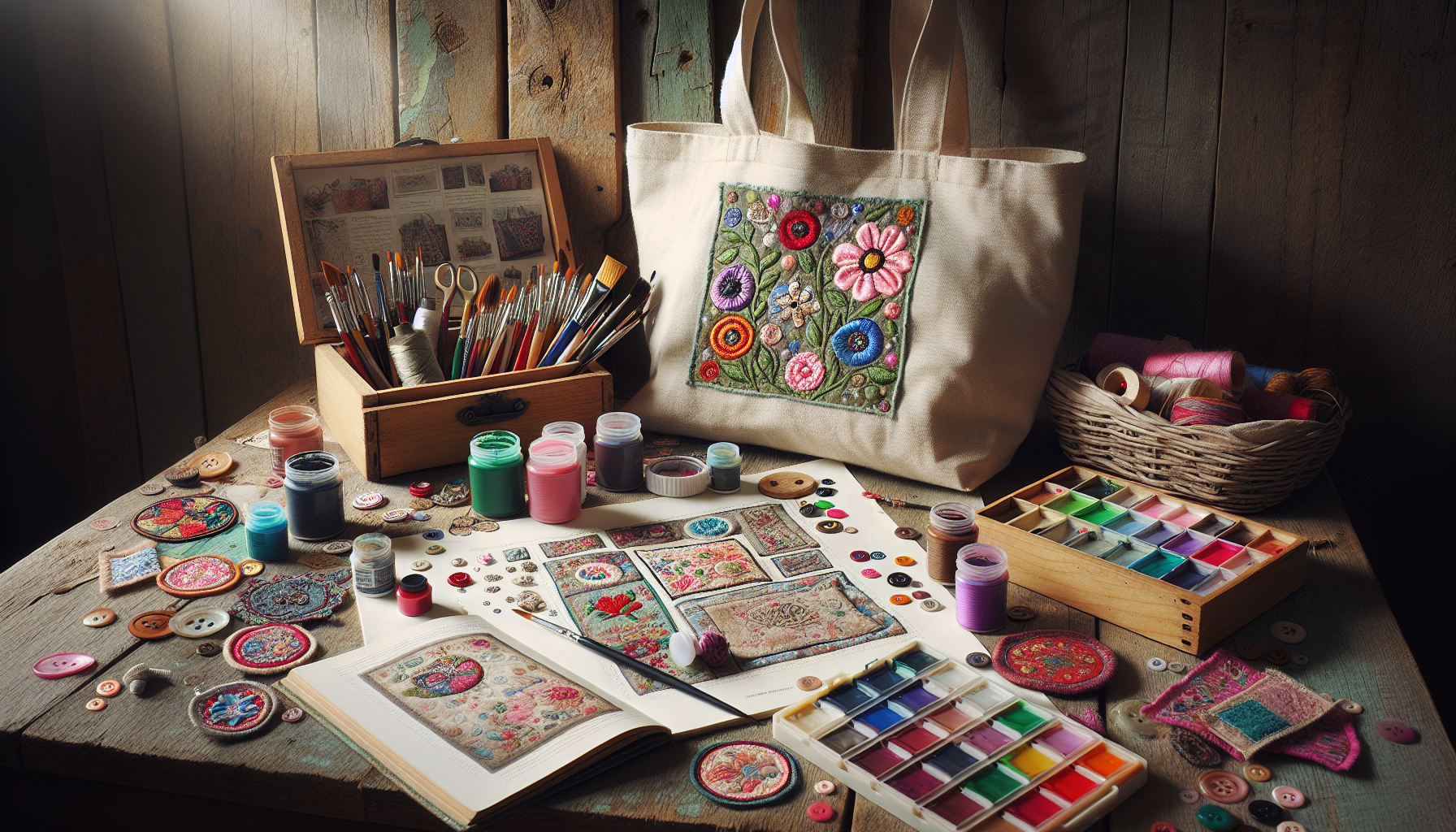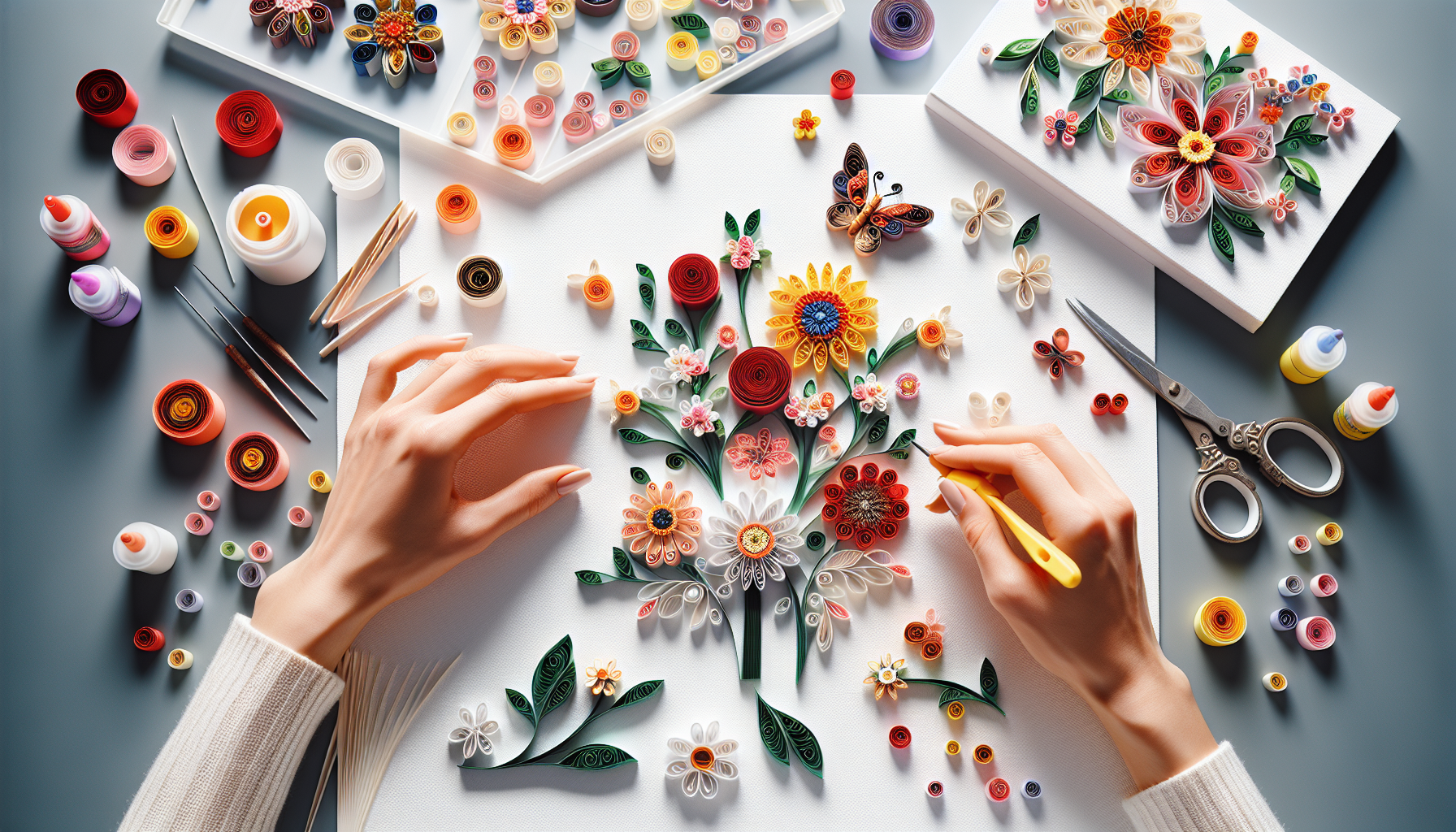Embarking on the journey of creating beautiful origami flowers is an enchanting experience that combines the art of paper folding with the beauty of floral design. This course is designed to guide beginners through the basics of origami, introducing them to essential folding techniques, symbols, and materials needed to start their origami adventure. From crafting the classic origami lily to exploring the delicate details of sakura blossoms and the intricate folds of roses, learners will discover the joy of creating their own paper garden. Alongside practical folding instructions, the course offers tips on how to add stems, leaves, and personal touches to each flower, ensuring that every creation is as unique as its creator. Join us in unfolding the beauty and tranquility of origami flowers, and let your creativity bloom.
Lesson 1

Introduction to Origami and Flower Structures
Origami, the art of paper folding, has fascinated people for centuries. It not only unleashes your creative potential but also offers a tranquil escape from the busyness of life. In this guide, we’ll dive into the basics of origami, focusing on creating beautiful origami flowers. Origami flowers are a perfect starting point for beginners, offering a blend of simplicity and beauty that rewards your effort with stunning results. Let’s embark on this journey to fold your garden of peace and beauty.
Understanding Origami Symbols and Folds
Before we start folding our origami flowers, it’s crucial to familiarize ourselves with origami symbols and basic folds. Origami instructions come with a universal set of symbols that represent various folds. These symbols serve as the language of origami, guiding you through each step to ensure precision and accuracy in your folds. Furthermore, mastering these folds will not only help you craft beautiful flowers but also inspire confidence to explore more complex designs in the future.
Common Origami Folds
- Valley fold: This is a basic fold that creates a V-shaped crease, directing the paper downwards.
- Mountain fold: Opposite to the valley fold, the mountain fold creates an inverted V, lifting the paper upwards.
- Petal fold: A combination of folds that allows the paper to bloom, much like opening petals.
Materials Needed for Creating Origami Flowers
One of the beauties of origami is its simplicity in materials. To begin crafting your origami flowers, all you need is:
- Origami paper: Square, thin paper that comes in various colors and patterns.
- A flat surface: To ensure precise folds.
- Patient and nimble fingers: Perhaps the most essential “tools” you’ll need.
Remember, the choice of paper can add an extra layer of beauty to your flowers, so feel free to experiment with different textures and colors.
Overview of Simple Flower Structures
Starting with simple flower structures is key for beginners. These foundational designs introduce the basic principles of origami while allowing you to quickly see the results of your efforts. Popular examples include the classic origami lily, which serves as an excellent introduction to more complex flowers. Through practice, you’ll learn techniques such as folding petals, creating stems, and adding leaves, giving life to your paper garden.
As you become more comfortable with these basic structures, you’ll discover the joy of experimenting and blending techniques to create unique variations. Origami is not just about following instructions; it’s also about expressing your creativity and personal touch.
Conclusion
Embarking on your origami journey with flowers is a wonderful way to introduce yourself to the art of paper folding. By understanding origami symbols, mastering basic folds, and starting with simple structures, you’ll be well on your way to creating a vibrant garden of paper blooms. Remember, each fold is a step towards mastery, and every flower you create is a reflection of your creativity and perseverance. So, let’s fold our way to a beautiful origami garden together.
Lesson 2

Crafting Your First Origami Flower: The Classic Lily
Welcome to the delightful world of origami flowers, where creativity blossoms and paper comes to life! Today, we’re diving into a step-by-step guide on crafting your very first origami flower: the classic lily. This elegant bloom is not only a staple in the origami garden but also an excellent project for beginners. By incorporating the main SEO keywords, we ensure that this article blossoms in search results, helping origami enthusiasts find and enjoy crafting their first paper lily.
Step-by-Step Guide to Folding an Origami Lily
Creating an origami lily is a graceful journey through folds and creases. Here’s how to bring this flower to life:
- Begin with a square piece of origami paper, colored side down.
- Fold the paper diagonally in both directions, opening after each fold.
- Bring all four corners to the center, forming a smaller square.
- Flatten the model to reveal a diamond shape, with open flaps at the bottom.
- Fold the outer edges of the diamond to meet at the central vertical crease.
- Carefully open the model and use the creases to invert the folds, shaping the lily petals.
- Gently pull the petals apart and shape them to add volume and realism.
Tips for Creating Smooth and Crisp Folds
For a truly lifelike lily, attention to detail is key. Ensure your folds are sharp and crisp by running a thumbnail along each fold. Additionally, working on a firm surface can greatly enhance precision, making your origami lily look all the more real.
How to Add Stem and Leaves to Your Origami Lily
No lily is complete without its stem and leaves. Using green origami paper, you can easily craft these additions, giving your lily a touch of vibrant greenery. Simply roll a piece of paper into a stem and fold additional pieces into leaf shapes, attaching them securely to the lily’s base.
Decorating Ideas to Personalize Your Origami Lily
Origami is an art of expression, and your lily should reflect your unique style. Consider adding:
- Subtle color gradients with markers for depth and realism.
- Delicate details such as veins on the leaves for a lifelike appearance.
- A touch of glitter or perfume for a whimsical, scented bloom.
This project is not just about folding paper; it’s about creating something beautiful and personal. Let your imagination lead the way!
Conclusion
Creating an origami lily is a rewarding experience, combining the joy of crafting with the beauty of nature. Through this gentle introduction to origami flowers, we hope you’ve found inspiration and confidence. Each fold brings you closer to mastering the art of origami, and each lily you create is a testament to your creativity and skill. So, fold away and let your origami garden bloom!
Lesson 3

Expanding Your Origami Garden: Sakura and Rose
Welcome back, origami enthusiasts! Today, we venture further into the enchanting world of origami flowers by adding two exquisite blooms to our garden: the sakura (cherry blossom) and the rose. Known for their beauty and complexity, these flowers may seem daunting at first. However, with a step-by-step approach and a sprinkle of patience, you’ll find joy and fulfillment in folding these stunning creations. Let’s immerse ourselves in the art of origami and allow our paper gardens to flourish with sakura and roses.
Folding an Origami Sakura (Cherry Blossom)
The sakura, or cherry blossom, symbolizes the ephemeral beauty of nature. Crafting an origami sakura brings this transient beauty into tangible form, enhancing any origami garden with its delicate petals.
Preparing the Paper
For the sakura, opt for lightweight paper in shades of pink or white. Cut square pieces – the size dictates the size of the blossom.
Folding the Sakura Blossoms
Start with a square piece of paper, folded diagonally in both directions. Crease well and unfold. Fold the corners to the center, then lift and squash fold each “petal” to shape the sakura.
Assembling the Flowers into a Branch
Assemble multiple blossoms along a twig or a piece of floral wire to create a charming sakura branch. Secure the blooms with a tiny dab of glue.
Crafting an Origami Rose: Intermediate Techniques
The rose, a symbol of love and passion, is a coveted creation in the realm of origami. Crafting a rose involves intermediate techniques that result in a stunning, detailed flower.
Creating the Petals
Begin with a square piece of red or pink paper. Through a series of folds and reverse folds, shape the petals individually. Patience and precision are key here, as well-crafted petals are essential for a realistic rose.
Forming the Rose Bud and Adding Leaves
Assemble the petals around a central point to form the bud. Use green paper to fold leaves and attach them to the base, adding to the rose’s realism and charm.
Assembly and Final Touches
Strategically join all parts, ensuring the rose blooms beautifully. A touch of glue may be necessary for stability. Feel free to add dewdrops with clear nail polish for a morning-fresh look.
Conclusion
By embracing the delicate intricacies of the sakura and rose, your origami garden will transform into a mesmerizing display of paper art. These flowers not only enhance your skills but also enrich your life with moments of peace and creativity. Continue folding, and watch as your garden blossoms with every petal and leaf you bring to life.
Creating beautiful origami flowers marks the beginning of a journey into the profound world of origami for many enthusiasts. Throughout this course, we have unfolded not just paper, but also the potential within each creator to bring beauty into the world through the art of origami. From mastering the basics of folds and symbols to creating intricate floral designs like the lily, sakura, and rose, every step has been a petal in the bloom of your origami garden. As you continue to explore and experiment with paper, remember that each fold is an opportunity for creativity, growth, and expression. To conclude this course and test the knowledge you’ve acquired, a 10-question quiz awaits below. Let’s see how much your understanding has blossomed, ready to take your origami flowers to the next level.
Test Your Knowledge With this short Quiz
Click here to copy your score to share on facebook!







